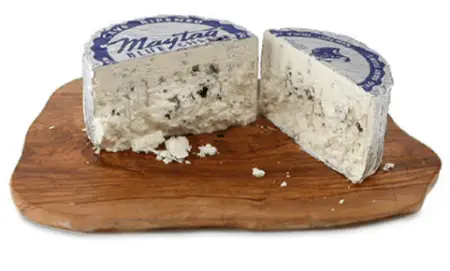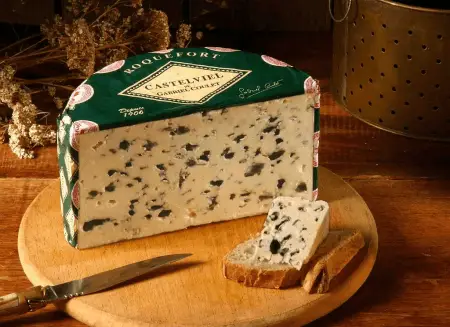Cheese, regardless of its kind, can be addictive. Why not? It is tasty, it goes well with almost anything, and it provides you the calcium and protein you need. Understandably, everyone – not only cheese connoisseurs – has their own favorite type of cheese. Some like it simple, like Cheddar. Many like it stretchy, like mozzarella. Then others like it complex, like blue cheese or Roquefort. Everybody has heard about mozzarella and Cheddar, but not everyone has tasted blue cheese and Roquefort. Are they the same? This article will focus on the difference between the two.
Summary Table
| Blue Cheese | Roquefort |
| A broad category of blue cheese | A specific type of blue cheese |
| Can be made with goat, cow, or sheep’s milk | Made with Laucaune sheep’s milk and Penicillium roqueforte |
| May come from different places depending on its specific kind | Produced in southern France |
Descriptions

Blue cheese is actually a broad category of cheese. It is called “blue” because of the distinct blue or blue-green veins (that are actually spots of mold) it contains. The blue spots appear after a process wherein Penicillium (a type of mold) is purposely added to it. The cheese is then aged in a temperature-monitored setting (i.e. a cave).
Cheese in this category can be made from sheep, cow, or even goat’s milk and are made in different places. Some have rinds while others do not. Some are soft while others are crumbly.
The taste can also range from salty to sour. However, all have one common denominator: all types of blue cheese have a distinct odor (similar to that of a foot odor).
Blue cheese goes great with fruits and nuts. It can also be used in sauces, salad dressing, and more.
Blue cheese salad dressing is one of the most popular dressings, and it can be used as a dip for vegetables.

On the other hand, Roquefort is one of the many kinds of blue cheese. It got its name from Penecillium Roqueforte, the specific mold intentionally added to it which is found in caves. This cheese comes from a tiny town in southern France and is made especially with Laucaune sheep’s milk.
Originally, locals would leave bread in caves for a long time until it was devoured by the mold.
They would then dry and pulverize the mold and use it for the cheese. Nowadays, the mold can simply be cultured in a lab and then injected into cheese to produce Roquefort.
Roquefort cheese, like any other blue cheese, is white with streaks of blue or blue-green mold. It has a very strong odor, has a moist texture and is easy to break into tiny bits. Its salty, tangy taste and crumbly texture make it a famous option for dressings and salads.
Roquefort cheese is protected by the EU (European Union). This means the cheese can only be produced in the caves of Roquefort-sur-Soulzon, in France. The only legally made blue cheese comes from here.
How is Blue Cheese Made?
Blue cheese is usually made according to these steps:
Pasteurize raw milk: the cheese is made by adding a starter culture to pasteurized raw milk. This process turns lactose into lactic acid, which then becomes solid.
Coagulate the milk: the next step involves adding rennet (an enzyme made in animals’ stomachs) to coagulate the milk. This step produces the milk curds necessary to make cheese.
Cut the curds: the coagulated cheese curds are cut. This process releases whey (a liquid byproduct of cheese).
Drain the whey: once the curds have been cut, the whey is then drained off, leaving behind the curds. The curds are formed into wheels or blocks.
Add mold: the penicillium is then added to the curds.
Circulate oxygen: during this step, the cheese is poked with steel rods to allow oxygen to circulate in the cheese. This allows the mold to grow and develop the veins of blue or green within the cheese. Salt is also added as a preservative to the cheese.
Age the cheese: blue cheese must age between 60 to 90 days (or more) before it’s ready to be used.
This process applies to all types of blue cheese, including Roquefort cheese.
Blue Cheese vs Roquefort
What, then, is the difference between blue cheese and Roquefort?
Blue cheese is a broad category of different kinds of cheese that are white with blue or blue-green streaks in them. It has many varieties ranging from soft to crumbly and from salty to sour. On the other hand, Roquefort is one of the many kinds of blue cheese. It is specifically made by injecting Penicillium Roqueforte into it.
It is made with the milk of Laucaune sheep from southern France.
In conclusion, Roquefort cheese is blue cheese but not all blue cheeses are Roquefort cheese.





